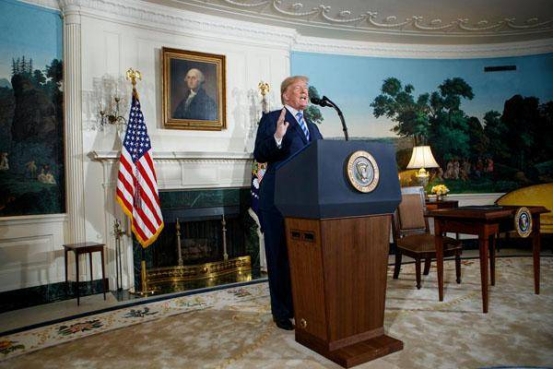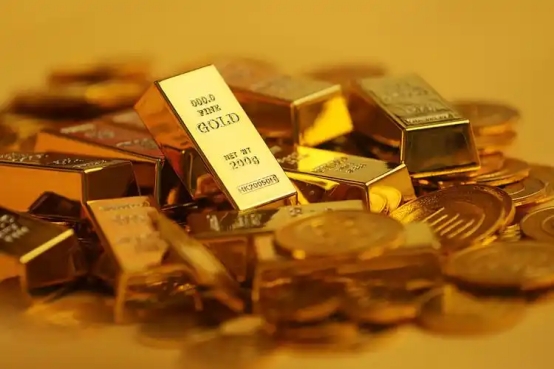Trump's tough stance on Iran's nuclear issue has caused a surge in demand for safe-haven gold! Can bulls break through key resistance?
- 2025年7月1日
- Posted by: Macro
- Category: News

On June 29 local time, US President Trump announced on the social media account "Real Social" that the United States has completely destroyed Iran's three nuclear facilities in Fordow, Natanz and Isfahan, and made it clear that "sanctions on Iran will not be lifted". At the same time, he warned that "if Iran continues to provoke, its nuclear facilities will be bombed again."


The controversy over the destruction of nuclear facilities and the US-Iran rivalry
In his speech on June 29, Trump claimed that the US attack on Iran's nuclear facilities had "razed them to the ground", but the Director General of the International Atomic Energy Agency, Grossi, said on the same day that Iran still has the ability to "resume uranium enrichment activities within a few months" and called on all parties to return to the negotiation table. Iran's Khatam Anbia Central Command responded that Iran is ready to "respond to any aggression" and demonstrated advanced military equipment developed locally. The differences between the two sides over the extent of damage to nuclear facilities highlight the risk of a protracted conflict.
The shift in sanctions policy and economic game
In an interview with Fox News on June 29, Trump made it clear that "only if Iran completely abandons its nuclear program and proves its peaceful intentions will sanctions be lifted." This position is in stark contrast to the indirect negotiations between the United States and Iran that began in April. Previously, the two sides had held five rounds of consultations on "Iran's restrictions on uranium enrichment in exchange for sanctions relief," but they were deadlocked due to the US's demand for "complete nuclear abandonment." Analysts pointed out that the Trump administration's move is aimed at forcing Iran to make concessions on the nuclear issue through a dual-track strategy of military deterrence and economic blockade.
2. Geopolitical risks escalate: Gold's safe-haven value is tested again
Short-term volatility
The sudden escalation of geopolitical conflicts caused a sharp fluctuation in the gold market. On June 30, spot gold surged to $3,289 in the short term after the data was released, but then fell back to $3,269 due to the rebound of the US dollar index (DXY rose 0.3%), closing down 0.2%.
Comparison of historical cases and market reactions
Looking back at the escalation of the US-Iran conflict in January 2020, the price of gold soared 4.5% within 24 hours after the attack on Soleimani, breaking through $1,610/ounce. Although the current conflict has not reached the level of a "hot war", the escalation of direct US military intervention (such as the airstrike on June 21) has caused market concerns about the "out-of-control situation in the Middle East". Deutsche Bank research points out that the geopolitical risk premium of gold usually peaks on the 8th to 20th trading day after a crisis, with an average increase of 5.5%. The current pullback may be a "bull entry opportunity."
3. The dual game of the gold market: the struggle between inflation and interest rates
Inflation stickiness and Fed policy expectations
Although geopolitical risks have boosted safe-haven demand, the Fed's hawkish stance still suppresses gold. The core PCE price index climbed to 2.7% year-on-year in May, the highest since February 2025, and the market's probability of a rate cut in September has fallen from 71% in early June to 58%. UBS pointed out that if the Fed postpones rate cuts or even restarts rate hikes, the upward trend in real interest rates will weaken the attractiveness of gold, but the "risk of a US recession" still provides bottom-line support for gold prices.
Global central bank gold purchases and the weakening of the dollar
Data from the World Gold Council shows that 95% of the central banks surveyed plan to continue to increase their gold holdings in the next 12 months, and the willingness of central banks in emerging markets to buy gold is particularly strong. At the same time, the report of the Official Forum of International Monetary and Financial Institutions (OMFIF) shows that the share of the US dollar in global foreign exchange reserves has dropped from 58% in 2024 to 52%, and gold has become the main beneficiary of "de-dollarization". This trend provides long-term structural support for gold.

